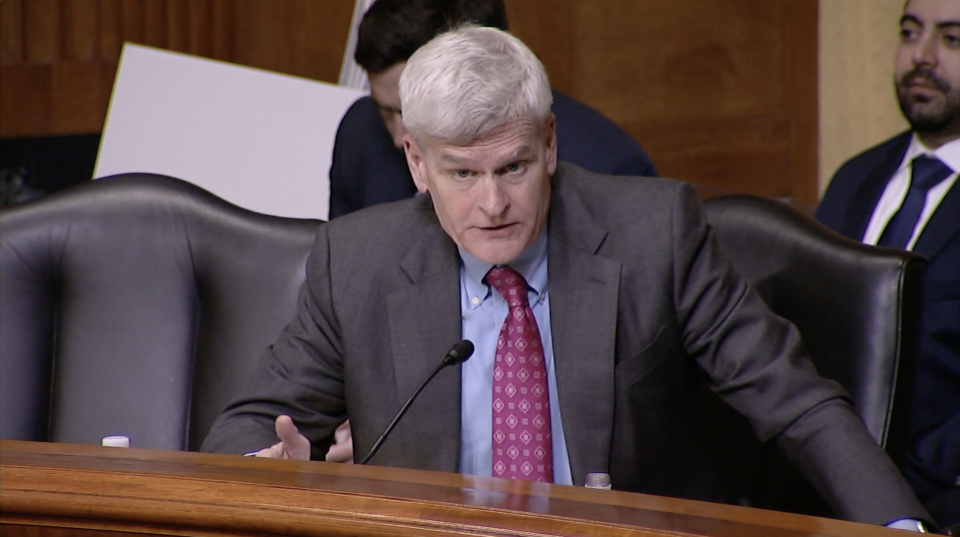Aug. 11
August 11, 2009Ruth Hills Blunt
August 13, 2009The Terrebonne levee board heard about an improved method of restoring underground pipeline that does not require digging up corroded pipe at the board’s meeting last week in Houma.
Technology has existed for years that allows damaged pipe in low-pressure systems to be relined. Smart Pipe, a new product manufactured by the Houston-based company with the same name, uses layers of tape made of composite material to wrap around a new core pipe that is inserted into damaged pipe.
The technology can be used in environmentally sensitive areas, CEO Steve Catha told the board, and in hard-to-access areas. The technology can repair up to 10 miles of high-pressure pipe. Work is done on site.
“Shell, Exxon, BP have said pipelines in environmentally sensitive areas are a problem,” Catha said. “They don’t want to dig it up.”
Holes still have to be dug at both ends of the damaged pipe to allow access. Catha said using Smart Pipe costs half the price of digging up old pipeline.
Before insertion into the damaged pipe, a standard polyethylene core pipe is wrapped with two layers of high-strength fabric using electronically-controlled tape winders.
Over that is wrapped carbon/thermoplastic “pulling tape” which allows the new core pipe to be pulled through the damaged pipeline.
The pulling tape contains fiber-optic sensors that can detect leaks and measure temperature.
Mylar tape and another thin layer of fiber is applied over the previous wrappings before the core pipe is compressed to fit into the damaged pipe.
A rope is threaded through the old pipe and attached to the new core pipe, which is pulled into the damaged pipeline using a winch.
“Smart Pipe is not heavy and is strong,” Catha said. “The factory moves to the site. We make pipe at the site.”
Smart Pipe had been located in Abita Springs before moving to Houston.
At the meeting, Catha also said his company manufactures flexible Smart Pipe that can be built in sections up to 10 miles long to carry sediment to build barrier islands. The pipe is made from recycled polyethylene, in contrast to standard steel sediment-carrying pipes.
“They have more flexibility than steel pipes,” Catha said.
He said the Smart Pipe can be laid on top of levees or can be elevated above them.
“They can go over levees with ease,” said levee board president Tony Alford.
Terrebonne Levee District Executive Director Reggie Dupre said the state paid $70 million for a sediment diversion project from Plaquemines Parish to Barataria Bay, but a better strategy is to move sediment from the Atchafalaya River delta area eastward.
“It’s 20 to 25 miles from Dularge to Morgan City,” he said. “That’s two lengths of this pipe.”
State Sen. Butch Gautreaux (D-Morgan City), who works as a paid consultant for Smart Pipe, said Smart Pipe lasts five times longer than steel pipe.
“It’s lighter weight,” he said. “It can run across marsh without doing environmental damage. It has no joints. Steel pipe wears very quickly and you have to rotate the pipe.”
“You can move it around steadily to where sediment needs to go … to build up areas that need restoration,” he said.
Guatreaux added that he was cleared by the state ethics board to work for Smart Pipe and said he performs business consulting work because state legislators do not receive sufficient pay.
“They (Smart Pipe) came to me because they knew I was a big proponent of coastal restoration,” he said.
Troy Constance, chief of coastal restoration with the Army Corps of Engineers, said delivery of material to barrier islands is the biggest cost when building islands.
“We should pursue it. It’s a quick and easy way of moving pipeline,” Constance said.
“This is worth doing,” he said. “For the corps, this is a huge problem.”
The board also looked at aerial maps of southern Terrebonne Parish showing elevations measured using modern GulfNet technology.
GulfNet uses the Global Positioning System to measure elevations each second. Information is gathered at GPS Reference Stations in south Louisiana.
“It’s super-accurate data,” Dupre said.
LSU engineering professor Roy Dokka told the board GulfNet measured the elevation of levees in the South Lafourche Levee District in a day.
The system showed parts of Pointe aux Chenes Road at 3.7 feet above sea level. The end of the road was 2.2 feet above sea level. Island Road sank as low as 1.9 feet above sea level.
“You can see why the road floods so easily,” Dupre said. “It was built in the late ’90s at 4 feet.”
He and Dokka pointed out the higher land elevations next to waterways that slope down to below sea level.
Louisiana Highway 56 by the Boudreaux Canal is at 3 feet above sea level. “That’s why we have water on the road,” Dupre said.
The area around the pontoon bridge on the Houma Navigation Canal is 6.5 to 7 feet high. Dupre singled out an area around a section of Bayou Dularge near Houma that is only 1.9 feet above sea level.
The system showed the Terrebonne Levee District office in East Houma at 5.7 feet above sea level.
Dupre said many of the levees constructed by current levee district predecessor the South Terrebonne Parish Tidewater Management and Conservation District have maintained their height.
Mitch Marmande, project manager on the Morganza-to-the-Gulf hurricane levee protection system being constructed by the levee district, told the board mitigation work on two stretches of Morganza levee near Chauvin would cost around $8 million.
Following Marmande’s recommendation, the board passed a motion to hire Shaw Coastal engineers to perform mitigation work on Reach H-3, which is under construction.
A Shaw Coastal representative said four pipelines cross the Reach H-2 alignment. Two will have to be relocated.
Marmande said design work on H-2 is a month and a half ahead of schedule and would be completed around Oct. 20.
Bids to construct H-2 will go out by mid-November.











